Introduction
Technology has become part and parcel of the world’s development. As expounded by Eagleton (2008), a basic understanding of technology has increased in importance. It is possible to teach embedded systems in class that will eventually result in technological literacy. It is argued that the term literacy has a life of its own, especially when it is connected to the development of the world. Hence, in a more realistic explanation, technological literacy would be closely related to the acquisition of computer knowledge and its applications. Needless to say, human work has been lessened due to the adoption and application of computing knowledge. The latter has immensely contributed towards globalization through technological literacy. This paper analyzes the concept of technological literacy and constructs that are instrumental in the modern advances in technology.
The concept of Technological Literacy
Literacy is critical to the development of the world. Therefore, any form of improvement in literacy is highly welcome especially if a country is in need to accelerate its development goals. However, in the last half of the century, technological know-how has attracted a lot of attention especially in the field of education. After the agrarian revolution, the industrial revolution set in, and technocrats put their minds to develop it. Selfe (1999) asserts that technological literacy directly refers to the ability to use computer technology and the manipulation of the machine to achieve certain benefits. Computers have been identified to be fundamental towards increasing the ability of a person to navigate the global village. Of greater concern is the navigation from a society that is riddled with traditional methods of knowledge acquisitions such as arithmetic, writing, and reading. In this discussion, therefore, the concepts and constructs of technological literacy are largely attached or embedded towards the ability to manipulate or use computing know-how in addition to other related technologies that demand special skills. At this point, it is imperative to underscore the fact the technological literacy is indeed a broad subject to cover. However, this paper mainly concentrates on computing knowledge. The latter can be closely linked and interconnected to technological literacy as part and parcel of studying education theories. In any case, the key objective of this form of literacy is to enhance quality learning as well as improve academic performance.
Concepts of technological literacy
Technological literacy concepts or constructs that are attached to computing tend to explore the following areas namely word processing, spreadsheets, telecommunication and internet, database management, social and ethical issues; systems design and analysis as well as multimedia and presentations.
In a simple organization, managers expect that employees understand basic computing skills. One of these basics is word processing skills. It comes in handy and is very critical towards organizational management. When it comes to filing and data storage, employees ought to understand this basic concept. According to Carbonara (2005), word processing skill is quite often integrated alongside with others such as
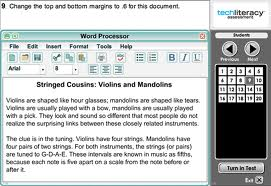
spreadsheets, internet software, e-mailing and databases. The figure alongside shows a basic word processing screen with some messages typed on it. The screen also displays means of manipulating texts. For example, for the heading, it is placed at the center by use of justification command. It is also put in bold by another command. Therefore, knowledge in word processing can assist in producing simple texts that can be read and understood by any technologically literate individual. Any type of organization will require its employees to understand these simple basics since they are fundamental to organizational management. Therefore, basic technological literacy is defined more by word processing than anything else relating to computer technology. In the language of Microsoft office, word processing techniques or the general skill is referred to know-how in Microsoft Word.
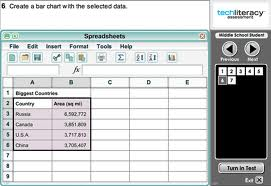
Over and above word processing, it is also a requirement that organizational employees understand how to manage arithmetic. Application of spreadsheet skill is important similar to the case in word processing. The reason behind this is that not all computer work involves typing grammatically correct sentences. There are others that involve keying in figures, executing mathematical calculations, listing with a particular order of importance and summing up. One of the ways through which spreadsheets can be used is through manipulating mathematical functions and formulas to come up with an end result to some kind of calculation. For example, it is possible to find the sum total of a list of figures. The figure alongside portrays a simple screen showing a spreadsheet with some workings on it. The highlighted part shows a list of countries and their average square kilometers. With such, it is possible to calculate the sum total of the areas, find the average, and divide a figure with another. In Microsoft language, most of the spreadsheet work is done in what is referred to as Microsoft Excel. However, there are others that help do more or less of Microsoft Excel work. An example of such is Microsoft access, even though this a more complicated nature of spreadsheet. Literacy on Access requires excellent database management skills.
In the last five decades or so, significant advances have been made in the field of communication and technological intelligence. Telecommunication and internet use has become critical to a point that no particular organizations can do without them. In the present world, internet use has been crucial in redefining technological know-how and above all, literacy in education. For example, basic skills such as word processing and spreadsheet have been dismissed as inadequate in defining computer savvy of a technologically advanced person. According to Bidgoli (2004), being able to use the internet and communication through telecommunication defines a modern intellectual.
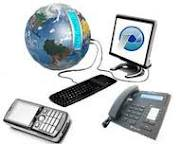
In developing countries, basic computer packages such as word processing are taken to be of great need in the growing economies. For technologically- advanced persons in an organization, it is a requirement for one to be able to use technologies such as internet-connected computers and telecommunication. The diagram above shows popular gadgets that define internet use and telecommunication. In the diagram, the globe-like diagram, the keyboard, and a TFT computer screen demonstrate the kind of interconnection that has come with internet technology. The world is interconnected and an individual is capable of obtaining global information displayed on his or her computer. The other two items in the diagram/figure are a mobile phone and a landline telephone. These have helped reduce virtual distance between persons and have greatly enhanced communication throughout the world. Internet use and telecommunication are arguably a must for anyone who wants to be technologically literate.
By definition, a database is a set of information that is pooled together for easier access and use. In essence, technological literacy has tended to be put as database literacy, and this simply means capabilities to gather and disseminate computer-related information. In computer management and literacy, what is most important is database management. This implies the ability to effectively utilize the information that is available in computers for greater use and performance maximization. The data is typically organized in a manner that will be of help to the end-user. Therefore, knowledge on how to utilize this information is critical for personal and organizational performance.
Social and ethical issues
In the present world, almost everything is abused. Technological or computer literacy is not an exception to this, especially when it comes to its social aspect. While this technology is geared to ease human communication and development, it has been abused to an extent that its initial relevance is being overshadowed. This brings in the aspect of ethical consideration in the use of technology. According to Quigley (2008), there is a right to expression. This refers to the right to use available information. However, social ethics rule that such right to expression should not contravene general principles such as violation of others’ rights. One of the most quoted computer development is social media, namely, Facebook, Twitterr, and other communication channels like Gmail and yahoo. In particular, there has been talking of social and ethical concerns in the use of Facebook which has connected half of the world. People are using it to advance their selfish ends in commenting and in the process violate others’ rights.
Systems and fundamentals
Computer technology is not all about software and data manipulation. It also involves basic skills in the management of information and/or data systems. For example, some of the fundamentals in this computer literacy are how to connect a computer and change hardware. There is a need for knowledge on what comprises a computing system. For example, anyone should understand the difference between hardware and software. The figure below shows a typical assembly of computer systems and fundamentals. They are the monitor as an output, a keyboard, and mouse as inputs, and the Central Processing Unit (CPU) which is the main machine.
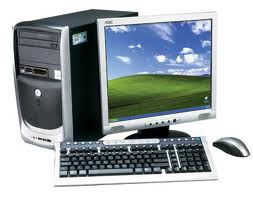
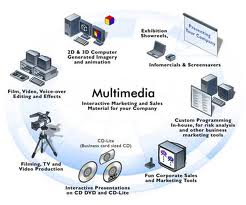
These are used for qualifying work of a computer, and the most used in this is PowerPoint presentation. It is a means of putting information in the computer in a most presentable way, and in the language of Microsoft Office, it is called Microsoft PowerPoint. There is also the use of projectors which generally magnify information for a larger population. In most cases, they are used as teaching aids. Advanced use of PowerPoint is in multimedia advertising and other appeal forms. An the employee would be required to have such basic technological or computer literacy. The use of projectors is mainly reserved for advanced learners or persons who perhaps represent an organization in the external environment.
Conclusion
To recap it all, it is vital to reiterate that technological literacy can hardly be ignored in the modern world. Specifically, organizations such as learning institutions ought to adequately equip their learners with technological literacy to keep with the pace at which the world is developing. In mentioning modern technological literacy, what comes into mind is computer literacy especially in data management. This paper has explored the concept of technological literacy and some of the concepts that are associated with it. As identified in the paper, these concepts are word processing, spreadsheet, multimedia and presentation, social and ethical issues, systems and fundamentals, telecommunication as w ell as internet and database management.
References
- Bidgoli, H. (2004). The internet encyclopedia: Volume 1. Hoboken: John Wiley & Sons.
- Carbonara, D. (2005). Technology literacy applications in learning environments. Hershey: Information Science Publishing.
- Eagleton, T. (2008). Literary Theory: An introduction. Minnesota: University of Minnesota Press.
- Quigley, M. (2008). Encyclopedia of Information ethics and security. London: Idea Group Inc.
- Selfe, C. (1999). Technology and literacy in the twenty-first century: The importance of paying attention. New York: The Conference on College Composition and Communication of the National Council of Teachers of English.